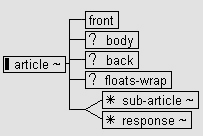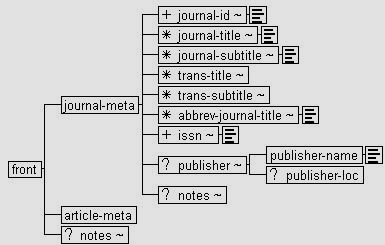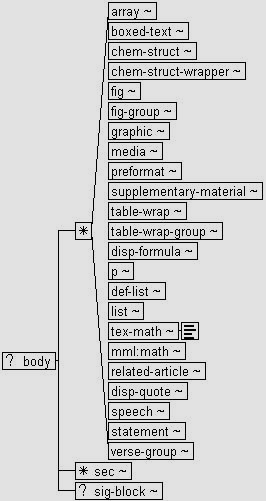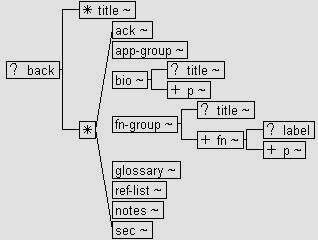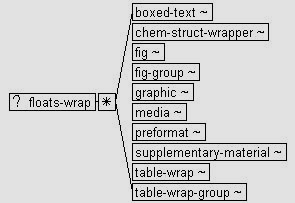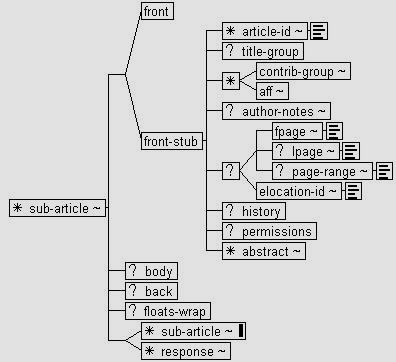Outsource XML Services to Eureka Science
In today's highly competitive business landscape, organizations managing large volumes of data often face the challenge of converting it into the desired format. Data conversion is essential for enhancing the usability and efficiency of information, making it a critical component of effective data management. Success in any organization depends significantly on how information is structured and presented. Eureka Data Services is a leader in XML data conversion, with expertise in formats such as the NISO Journal Article Tag Suite (JATS), Archiving and Interchange Tag Suite, and NLM DTDs.. We specialize in converting STM articles to NLM Journal Publishing Tag Set versions 2.3 and 3.0, ensuring accuracy and compatibility across platforms.
WHAT IS XML?
Extensible Markup Language (XML) is a versatile markup language designed for storing, transporting and sharing data. It provides a framework for creating custom markup languages tailored to specific needs. The primary function of XML is to enable the seamless creation of structured information formats and facilitate the electronic exchange of structured data across various systems, often via the internet. Additionally, XML XML serves as an open standard endorsed by the World Wide Web Consortium (W3C). Its flexibility and adaptability have made it widely adopted across industries and applications
WHAT IS XML DATA CONVERSION?
XML Conversion refers to the process of transforming data from one specific format into XML, following a set of rules defined by the XML language. XML data is "self-describing" or "self-defining," as its structure is embedded within the data itself, eliminating the need for manual structure definitions. Converting data into XML format improves its presentation, structure, and shareability. This process enhances data usability, making it more accessible, reusable, and efficient for information delivery systems.
XML SERVICES OFFERED
At Eureka Science, we offer a comprehensive range of XML conversion services designed to meet the diverse needs of our clients. Whether you're looking to convert documents, publications, or any other data, our services are designed to streamline your workflow and enhance data usability. Our XML data conversion services include:
- • HTML to XML: Convert your HTML files into XML format to create structured, machine-readable data for improved processing and integration.
- • MS-Word to XML: Transform your MS Word documents into XML format for better organization, seamless sharing, and enhanced compatibility with various systems.
- • PDF to XML: Extract and convert data from PDF files into a structured XML format, making your information more accessible, reusable, and efficient.
- • XML Tagging Services: Ensure your data is properly tagged and structured, ready for applications such as publishing, archiving, and data management.
Our team of experts ensures that each conversion is executed with precision, preserving the integrity of your data while maintaining compliance with the required XML standards.
NLM JOURNAL PUBLISHING TAG SET VERSION 2.3, 3.0 AND JATS V1.3
NLM Journal Publishing Tag Set Overview
The Journal Publishing Tag Set defines the elements and attributes used to structure the content of journal articles, as along with other text-based materials commonly found in journals, such as letters, editorials, and book/product reviews. While primarily designed for biomedical journals,, this tag set is applicable to STM (Science, Technology, and Medicine) journals across various disciplines. It organizes both the metadata of a journal article and its content, though it can also be used solely to describe article header metadata. This tag-set’s primary goal is to standardize and streamline the structure of journal materials, ensuring a consistency across publications.
The tag set operates under the Journal Publishing Document Type Definition (DTD), which is the foundational constraint language for the set. It incorporates Publishing-DTD-specific modules while referencing base modules from the Journal Archiving and Interchange Suite. This suite was designed to enable the electronic sharing and reuse of health-related data and can be adapted to create additional tag sets beyond the Publishing Tag Set. Although the suite is primarily designed to support electronic production, its structures are versatile enough to accommodate print production requirements as well.
Key Design Features and Philosophy
Unlike the Journal Archiving and Interchange Tag Set, which provides multiple ways to present the same information, the Journal Publishing Tag Set simplifies the tagging process by adopting a single route for each content element. This approach minimizes unnecessary options, streamlining the data conversion process and enhancing the efficiency of information exchange. While the Archiving Tag Set accomodates a variety of structures, the Publishing Tag Set standardizes essential structures that are critical to organize archives, ensuring a more streamlined and functional outcome.
What This Tag Library Provides
This Tag Library offers comprehensive resources to help you understand and effectively use the Journal Publishing Tag Set:
- • Design Principles: Outlines the modular design philosophy of the Archiving and Interchange Suite.
- • Tag Library Guide: Provides instructions on how to read and utilize this library effectively.
- • Journal Publishing Tag Set Introduction: A detailed overview to the core elements of the tag set.
- • Creating New DTDs: Guidance on constructing new Document Type Definitions (DTDs) using modules from the suite.
- • Reference Sections: Extensive reference materials detailing elements, attributes, and parameter entities defined in the tag set, including individual definitions and tagged examples.
- • Hierarchical Diagrams: Visual diagrams highlighting the structure of the Journal Publishing Tag Set.
- • Tables & Appendices: Additional reference materials addressing specific details of the tag set.
- • DTD Modules: Copies of the Journal Publishing DTD modules and the modules from the full modular suite.
- • Full Article Sample: A sample article in both PDF format (showing layout) and XML format (validated against this tag set).
By leveraging this library, users can gain a deeper understanding of the Journal Publishing Tag Set and apply it to streamline content management while enhancing the interoperability of journal articles.
If you're interested in using our XML Conversion Services for publishing or archiving journal content, reach out to us for a custom quote. Contact us at poster@eureka-science.com for more details and pricing information.


